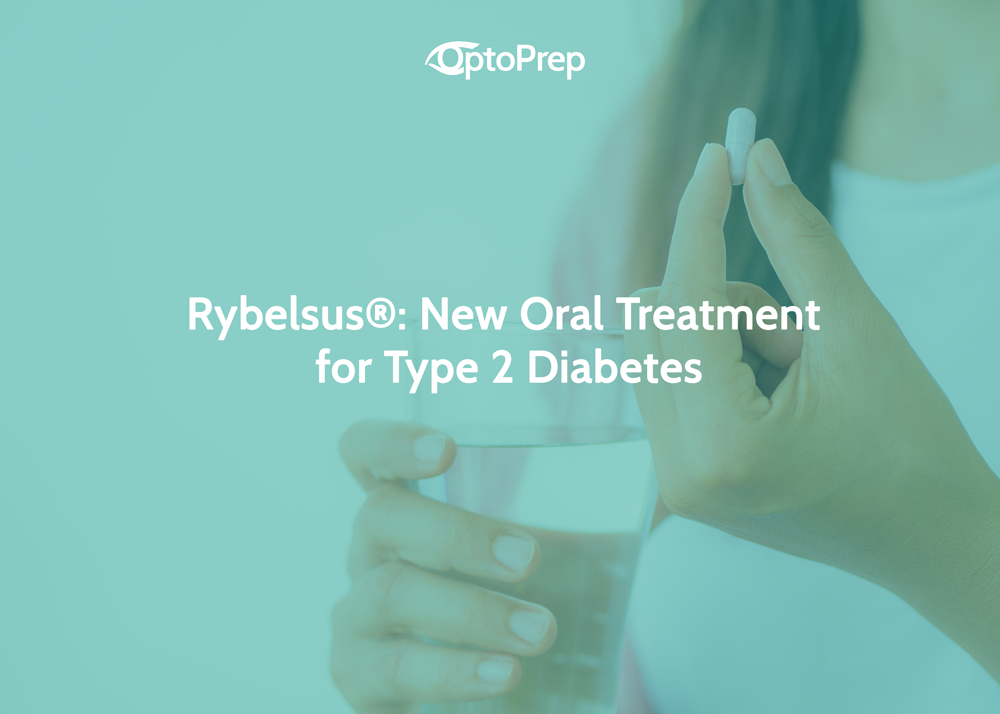
The U.S. Food and Drug Administration (FDA) recently approved a new oral medication for blood glucose management in adult patients with type 2 diabetes. Manufactured by Novo Nordisk, Rybelsus® (semaglutide) is the first drug in a class of medications known as GLP-1 (glucagon-like peptide) inhibitors that do not need to be injected.
This is very exciting news in that many patients with type 2 diabetes are not able to be adequately managed with oral medications alone, and often need to add injectables into their treatment regimen. Rybelsus® gives patients a new option for treating their diabetes without potentially needing to go down that path. Below we will outline the important factors you should know about this new medication.
GLP-1 Receptor Agonist Mechanism of Action
- Action is based on incretins, which are gut hormones that work to increase insulin secretion following ingestion of food
- Incretin hormones work in several ways; they increase satiety, slow stomach emptying, increase insulin release from the pancreas, and decrease glucagon release
Indications and Usage
- Rybelsus® is indicated as an adjunct to diet and exercise to improve glycemic control in adults with type 2 diabetes mellitus
- It is not recommended as first-line therapy for patients inadequately controlled with diet and exercise
- It is not indicated for use in patients with type 1 diabetes mellitus or for the treatment of ketoacidosis; it has also not been studied in patients with a history of pancreatitis
Dosage and Administration
- Rybelsus® should be taken at least 30 minutes before the first food, beverage, or other oral medications of the day with no more than 4 ounces of plain water only
- Rybelsus® is typically initiated with a dosage of 3 mg once daily for 30 days; after 30 days the dose can be increased to 7 mg once daily
- Dose may be increased to 14 mg once daily if additional glycemic control is needed after at least 30 days on the 7 mg dose
- Prior to Rybelsus®, GLP-1 agonists were only available as an injection that was taken either twice daily, or once weekly depending on the drug
Contraindications
- Patients with a personal or family history of medullary thyroid carcinoma or in patients with multiple endocrine neoplasia syndrome type 2
- Known hypersensitivity to semaglutide or any components in Rybelsus®
Warnings and Precautions
- Pancreatitis: was reported in clinical trials; patients should discontinue immediately if pancreatitis is suspected and it should not be restarted if confirmed
- Diabetic retinopathy complications: was reported in trials with semaglutide injections; patients with history of diabetic retinopathy should be monitored
- Hypoglycemia: if used with an insulin secretagogue or insulin, the dosage of the insulin or secretagogue may need to be lowered to reduce the risk of hypoglycemia
- Acute kidney injury: patients with renal impairment should have renal function monitored if reporting severe adverse gastrointestinal reactions
- Hypersensitivity reactions: Rybelsus® should be discontinued if hypersensitivity is suspected
- The most common adverse reactions of Rybelsus® include: nausea, abdominal pain, diarrhea, decreased appetite, vomiting, and constipation
Black Box Warning
- Risk of thyroid c-cell tumors
- In rodents, semaglutide causes thyroid c-cell tumors; it is unknown whether Rybelsus® causes c-cell tumors, including medullary thyroid carcinoma (MTC)
- Patients should be counseled regarding the potential risk of MTC and the symptoms of thyroid tumors
